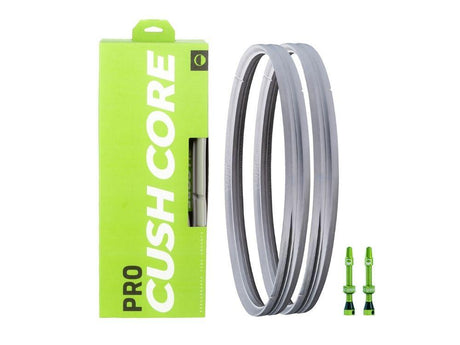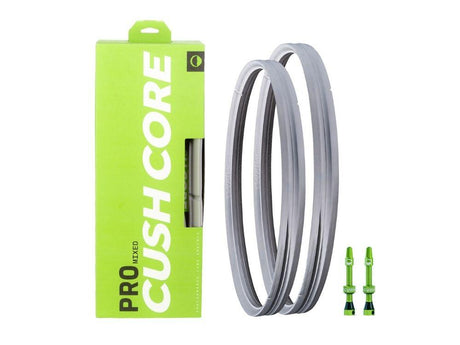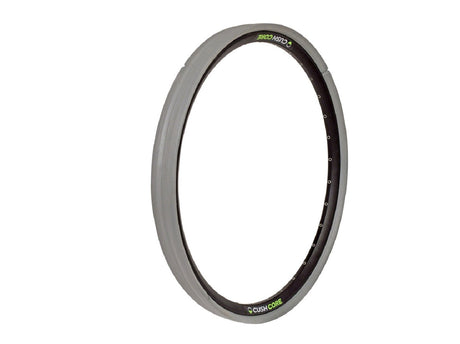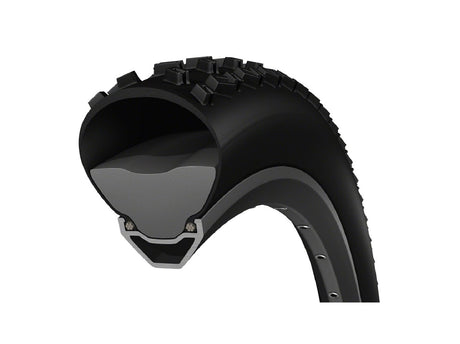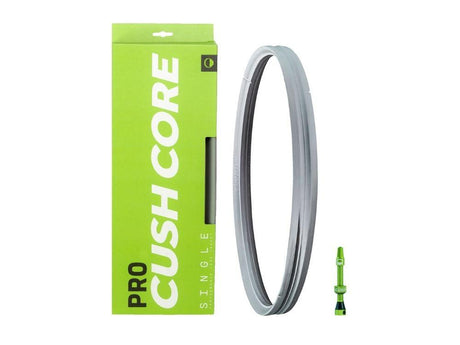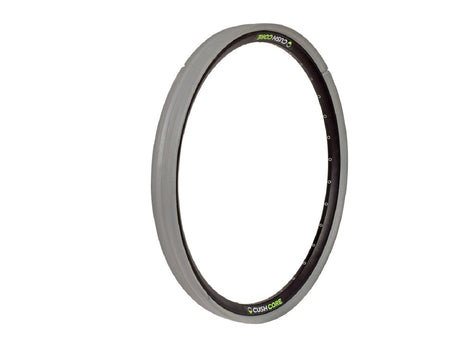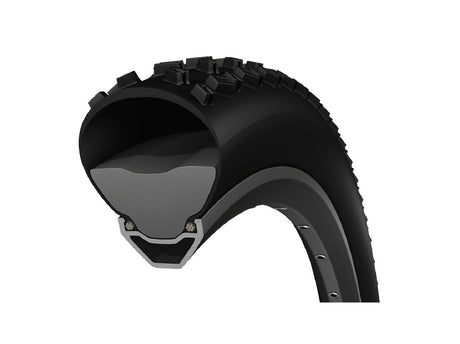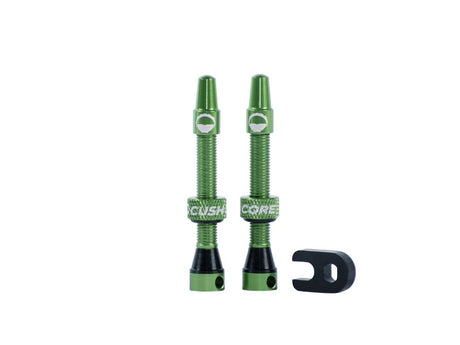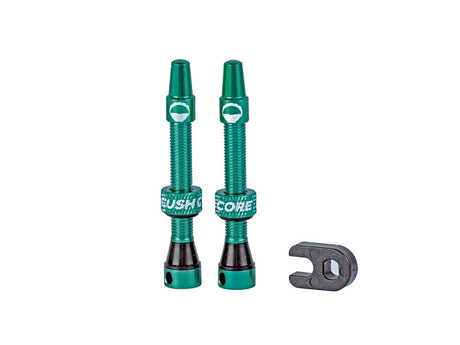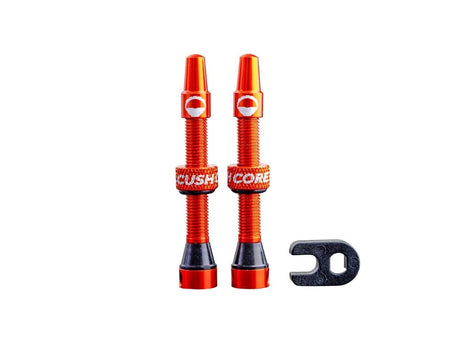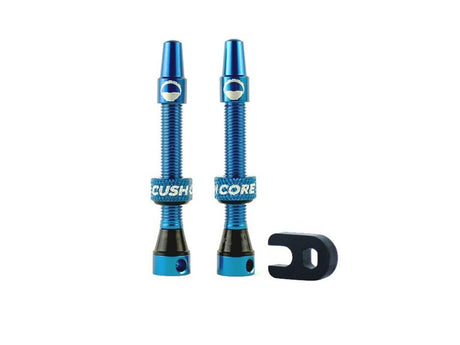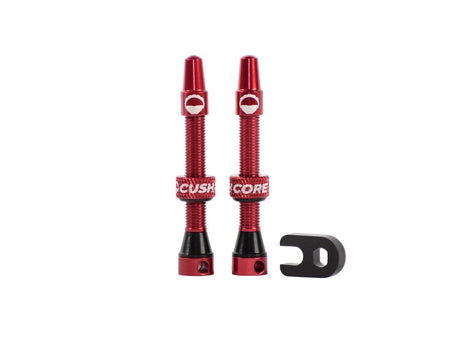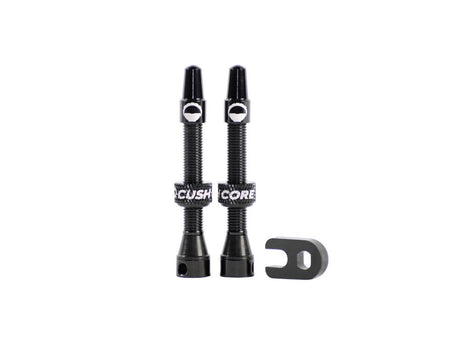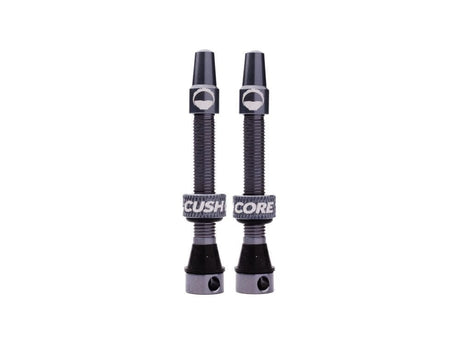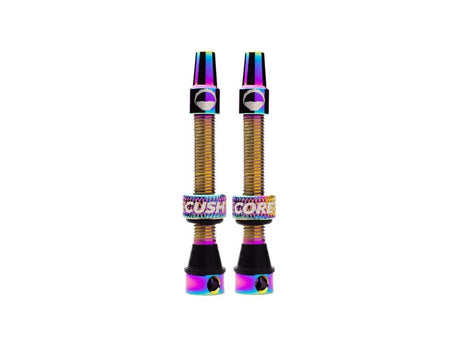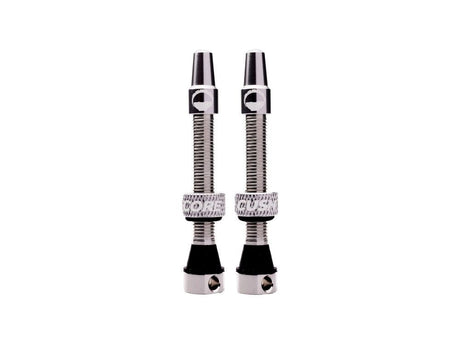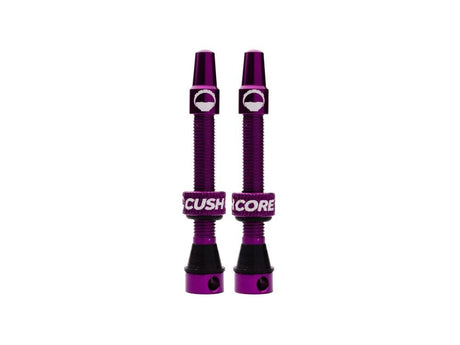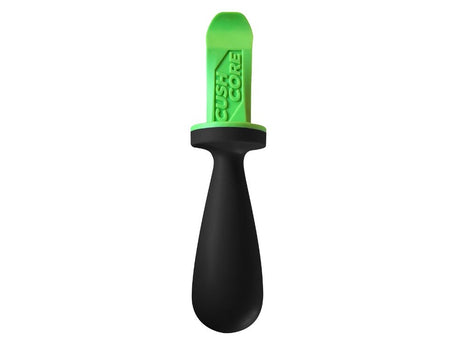Intro
Ever since its release, CushCore has been the gold standard of tire inserts, with countless riders depending on it for cornering support and rim protection, including lots of us here at The Lost Co! CushCore has slowly been expanding their product line with the release of the XC and Trail models to go alongside the Pro model. While they all look like really similar foam circles, each of them cater to a different rider. If you’re looking for more traction and a better overall ride from your tires, all of these models do exactly that, and we’ll help you find the perfect fit for your bike and riding style.
CushCore Pro
- Weight (29"/27.5"): 260g/250g
- Cross section: 55x23mm
- Tire width: 21-2.6"
- Rim Width: 22-35mm
CushCore Trail
-
Weight (29"/27.5"): 212g/199g
-
Cross section: 55x19mm
-
Tire width: 2.1-2.6"
-
Rim width 22-35mm
CushCore XC
-
Weight (29"/27.5"): 150/140g
-
Tire width: 1.8-2.4"
- Rim width: 22-32mm
The difference between the inserts comes in the support they offer in corners, volume they fill in the tires, and weight they add to your tires. Generally, as you add cornering support and fill your tire volume, you’ll be adding weight as well. Each of these three inserts is a trade off between increased performance and weight penalty, so you have to decide how much weight you’re willing to add to get the performance you’re looking for. No matter which one you choose, you’ll be able to lower your tire pressure for increased traction without comprimising rim safety, letting you dance through the rock gardens with confidence and stay on the trail through the flat corners.
CushCore Pro
The original model in the lineup, the CushCore Pro, has become a staple insert in gravity riding disciplines like downhill and enduro, and it offers the most support of the three options. With the largest profile of 55mm x 23mm at the cross section and the stiffest foam of all three, good luck denting your rim or rolling your tire over in a corner. With how stiff the foam is, you can even ride with a flat tire and not completely ruin your rim, which will be a nice insurance policy for anyone signing up for races this summer!
All of that performance does come at a weight penalty though. The CushCore Pro weighs 260g in the 29” version, and 250g in the 27.5” version. The Pro version is designed specifically for rims with between 22mm and 35mm inner width, and tires between 2.1" and 2.6” wide, so these are perfect for any enduro or downhill rim and tire setup.
CushCore Trail
The newest model of the bunch, the CushCore Trail aims to be a slightly lighter but tech filled version of the Pro model. With the same width and a 4mm shorter height, the Trail model doesn’t fill as much volume as the Pro version and gives marginally less cornering support. It’s also worth noting that the foam itself is a bit softer compared to the Pro version, and is part of the reason I wouldn’t be as confident riding the Trail model with a flat tire. But, because of that softer foam, the insert isn’t as noticeable when you bottom out on it through a rock garden, and it disappears into the background a bit more.
Unsurprisingly, the smaller profile of the CushCore Trail brings the weight down to 212g in the 29” version and 199g in the 27.5” version. 50 grams may not seems like a lot of weight savings, but we’re talking about rotating mass and sprung mass here, so there are more performance benefits to dropping this weight when compared to losing this weight from anywhere else on your bike. Losing this weight will let the bike come off the ground slightly easier and accelerate slightly faster, but it’s still a fairly marginal gain. For context, the difference between a DoubleDown and an EXO+ tire from Maxxis is over 100 grams, so that may be a better place to start if you’re looking for big weight savings!
With about the same dimensions as the Pro model, the CushCore Trail is designed for the same rim and tire dimensions, and will fit great in pretty much all but the narrowest rims and tires.
CushCore XC
The lightest and most pared down version of CushCore is the XC model. With smaller dimensions designed for the narrower rims and tires that are commonplace in the XC world, the weight of these inserts comes down to 150g for the 29” version and 140g for the 27.5” version.
CushCore Pro vs Trail vs XC
The CushCore Trail is designed to fill in the middle ground between CushCore’s Pro and XC models. I’ve only ever used the Pro model, but Mike has gotten some riding time on the XC model as well, so what’s the main difference between those two cushcore models?
Well maybe the CushCore Trail could be the Goldilocks tire insert that sits right between the two, with more support than the XC and less weight than the pro. It's weight is right in the middle of the two, at 212g for the 29” model, and 199g for the 27.5 model. That’s about 50 grams less than the Pro and 60 grams more than the XC. Recall the difference bewteen an EXO+ tire and a DoubleDown tire from Maxxis is about 100g, so we're not a talking about a huge weight savings comparing Pro to Trail to XC.
CushCore Pro vs Trail
When looking at the Trail versus the Pro, since we primarily focus on trail through downhill mountain biking, it’s pretty obvious that there’s quite a bit more tech packed into this new pool noodle. There are cutouts and channels everywhere, and a big CushCore logo that is gonna look great inside of your tire. These channels cut in the under side of the insert are supposed to let sealant flow a little more freely through the tire and get to punctures to do its job. These notches cut along the the part that sits on the rim bed are just to cut down on weight without losing too much performance. Along the top of the insert, the other notches are designed to created progressive cornering support.
The Trail and Pro models are the exact same width, 55mm, but the trail model is 4mm shorter, at 19mm. The biggest difference between them is the actual foam they’re made of. The Pro model is noticeably stiffer when we give it a little squeeze, and the trail model is a bit more supple.
Who knew there could be so much tech in a tire insert? Well I’ve only had a limited amount of time on this new CushCore trail, but there are deftiniely some noticeable differences compared to the CushCore Pro model out on the trail.
On Trail Differences
On the way up, the weight difference is pretty negligible compared to the CushCore Pro, and I didn’t really feel like I was moving any faster when cruising up a fire road. It’s only about a 50 gram difference, which is only about 2% decrease in weight when looking at the rim, tire, and cushcore package, so this won’t feel incredibly different when climbing, but hey, lighter is lighter!
When pointed downhill, I noticed more of a difference when compared to CushCore Pro. With the Trail model installed in my tire, the most immediate difference was that it was a bit easier to pop off of little lips where all of your height comes from bunny hopping The rear end of the bike also felt like it came off the ground just a bit easier. On bigger jumps, they felt pretty similar to each other, and throwing the bike around didn’t really take any more or less effort.
During general trail riding, the softer foam gave the tire a slightly softer overall feeling, and my tire felt like it conformed to the ground slightly easier compared to the Pro model. In berms, I was getting a super similar feeling to the CushCore Pro, which is a huge pro for me. I think the cornering support is the number one reason to run CushCore, and I didn’t feel like I lost any of that on the CushCore Trail. Because of that softer foam in the trail model, I definitely expected to lose some of the sidewall support, but maybe because they’re the same width, there was still plenty of support for me to lean on.
One thing I haven’t gotten to test yet but might be a short coming of the CushCore trail is riding it with a flat tire. Riding the CushCore Pro with a flat is surprisingly viable. While I was racing enduro, knowing that I could make it down pretty much any trail with a flat tire without losing too much time gave me so much peace of mind, but I don’t know if the Trail version would be quite as effective considering its softer foam and shorter height. Maybe racers could use the Pro model in the rear and the Trail model in the front because rear flats are way more common and they could save a bit of weight in the front.
Summary
Overall, this doesn’t feel like an entirely new insert from CushCore, but rather an incremental improvement to an already great product.
I would definitely recommend the CushCore trail over the CushCore Pro to pretty much anyone in the market for a tire insert because it offers almost all of the same performance benefits with a little bit less weight. For those of you who are out there spending your weekends racing the clock, or you’re in the bike park all summer and don’t mind a little extra weight, the CushCore Pro does offer a little more insurance over the Trail model for a bit of a weight penalty.
Also! There’s new valve stem colors! We’ve got Titanium, Silver, Purple, and a very trendy Oil Slick. Each of these cost $25 for a set, besides the Oil Slick which costs $30. The CushCore Trail is the same price as the CushCore Pro at $150 for the set, or $78 for just one.
Shop Mountain Bike Tire Inserts
Got questions? Feel free to shoot us an email or give us a call!
(360) 306-8827
sales@thelostco.com
ABOUT THE RIDER/WRITER
| NAME | AGE | HEIGHT | LOCATION |
| Tor Weiland | 24 | 5'11" | Bellingham, WA |
Current Bikes: Transition Spire Custom Build
Bike Size: Medium
Favorite Trails: Oriental Express, Galbraith
About Me: Hailing from the sunny landscape of California, Tor headed north and landed here in the cloudy town of Bellingham, WA. His riding style is "PINNED" and he loves to scope out those seemingly impossible triples. He loves riding and also loves sharing his experiences with others. You can catch Tor in front of the camera or behind the keyboard, but best of luck catching him on the trail!

